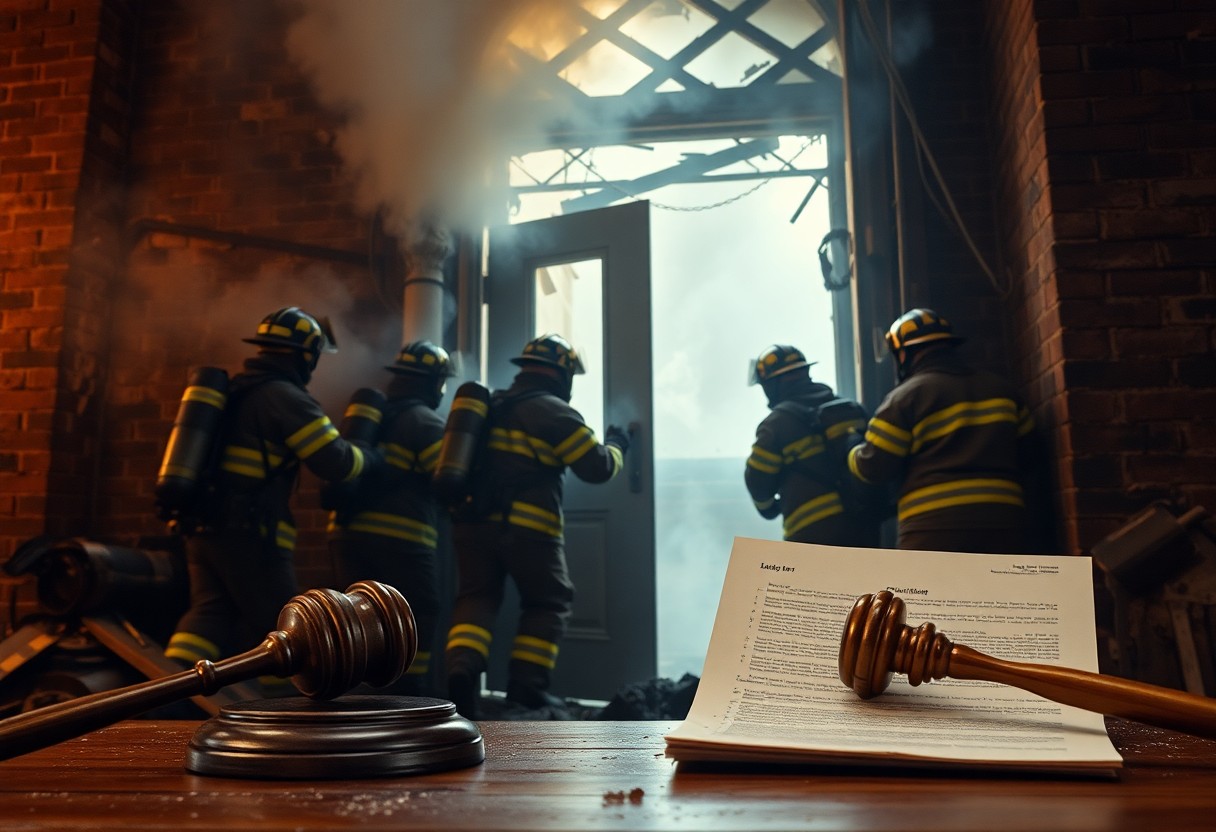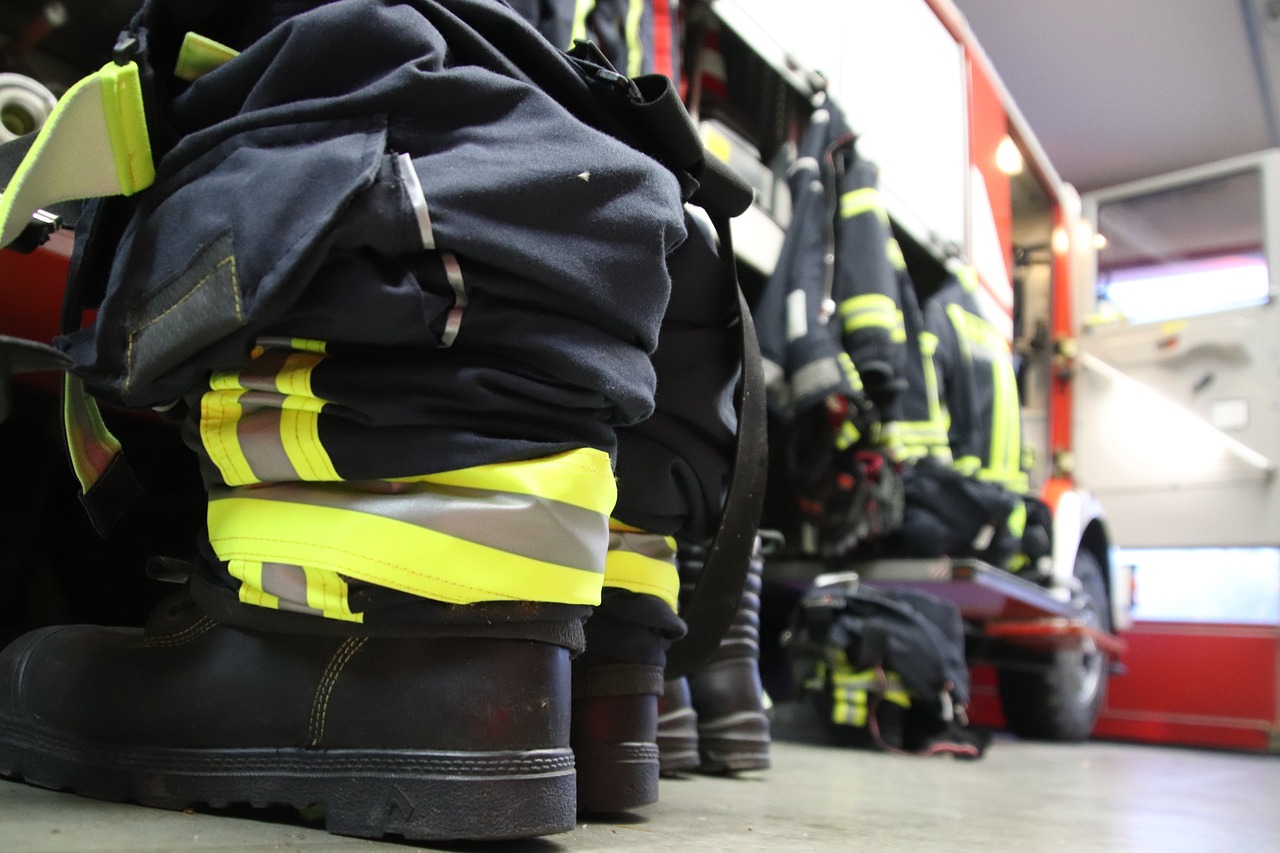Firefighting often requires split-second decisions, particularly when it comes to forcible entry into buildings. As you navigate these critical situations, understanding the legal considerations surrounding forcible entry is important for ensuring your actions comply with the law. This post will explore the legal frameworks and liabilities associated with forcible entry, helping you understand your rights and responsibilities, ultimately equipping you with the knowledge necessary to make informed choices in the heat of the moment.
Definition of Forcible Entry
While firefighting often requires swift action to save lives and protect property, forcible entry is the process of gaining entry into a building or structure when doors or windows are locked or obstructed. This action is sometimes necessary during emergencies to facilitate rescue and firefighting efforts, and it carries legal implications that firefighters must understand.
Legal Definition
One of the key aspects of forcible entry is its legal definition, which varies by jurisdiction. Generally, it is defined as the act of entering a property through physical means when normal access is unavailable. Understanding this definition helps you navigate the potential legal consequences involved.
Procedures and Protocols
After establishing the need for forcible entry, specific procedures and protocols come into play to ensure the action is justified legally and conducted safely. Adhering to these guidelines protects you and your department from liability.
Consequently, it is paramount that you are familiar with your department’s established protocols, which usually include obtaining permission from the incident commander, assessing the situation, and documenting the reasons for your actions. Following these procedures not only affirms the legality of your entry but also enhances the safety and efficiency of your firefighting efforts. Proper training on the tools and methods used for forcible entry is equally important to minimize damage and ensure a quick response under pressure.
Legal Norms Governing Forcible Entry
You need to understand the legal framework that governs forcible entry in firefighting. This involves navigating various laws and regulations that dictate when and how emergency responders can legally enter a property without consent. These legal norms are designed to protect both the rights of property owners and the safety of the public, ensuring that your actions during an emergency are justifiable and lawful.
Statutory Regulations
Forcible entry is often governed by statutory regulations that outline the circumstances under which emergency personnel may enter a property. These laws typically permit entry without consent if there is an imminent threat to life, property, or public safety. Additionally, specific procedures must be followed to document the situation appropriately, ensuring compliance with local statutes.
Case Law Overview
Any assessment of forcible entry also requires a look at case law, which provides context on how statutes are interpreted in various situations. Courts have consistently reinforced the idea that actions taken during emergencies must balance urgency with the rights of individuals, clarifying what constitutes reasonable force in the face of immediate danger.
Plus, understanding relevant case law can help you anticipate potential legal challenges you might face during forcible entry situations. Various court rulings have shaped the definitions of justified entry and established important precedents. Familiarizing yourself with these decisions can enhance your ability to act appropriately while minimizing the risk of legal repercussions. This empowers you with the knowledge necessary to protect both lives and your professional responsibilities as a firefighter.
Liability Issues
One of the most significant concerns surrounding forcible entry in firefighting is liability. If you are a firefighter, understanding how your actions may lead to legal consequences is vital. While you may be acting in the best interest of saving lives and property, you could still face situations where your decisions are called into question, leading to potential lawsuits or legal ramifications.
Firefighter Immunity
At a fundamental level, many jurisdictions provide firefighters with a degree of immunity for actions taken in the course of their duties. This means that when you engage in forcible entry to combat a fire, your actions are often protected under specific legal provisions as long as they fall within the scope of your professional responsibilities.
Civil Liability for Damages
Immunity from civil liability for damages is not absolute and can vary based on the circumstances surrounding the forcible entry. If someone believes your actions were unjustifiable, they could pursue claims for damages resulting from property destruction. You should be aware that even with immunity protections, courts may examine whether your actions were reasonable and necessary under the circumstances.
To mitigate risks of civil liability, it’s vital to adhere to established protocols and guidelines when performing forcible entry. Documenting your actions and the rationale behind them can serve as a strong defense if faced with legal challenges. Additionally, receiving training on legal aspects of your duties can better equip you to navigate the complex landscape of liability in firefighting. It’s vital to stay informed to protect both you and your department from potential legal repercussions.
Property Owner Rights
Once again, it’s important to recognize that property owners generally hold specific rights that influence how forcible entry is managed during firefighting operations. When emergencies arise, firefighting personnel may need to breach a property to extinguish fires or rescue individuals. However, your rights to privacy and property protection still apply, though they may be temporarily overridden by the law in the interest of saving lives and preventing broader damage.
Expectations of Privacy
By knowing your expectations of privacy as a property owner, you can better understand how they interact with the authority that firefighters possess in emergency contexts. Generally, you have a reasonable expectation of privacy within your home or property, and any forcible entry must be justifiable. In emergencies, this expectation may be diminished, particularly to prevent imminent danger to life and property.
Consent and Notification
About consent and notification, it’s important for you to be aware of the legal requirements associated with firefighting actions. When firefighters foresee the need for forcible entry, they typically must inform you or obtain your consent whenever possible. This ensures that you are aware of potential harm to your property and the actions being taken to ensure safety.
Consent allows you to maintain some control over your property, and notification helps to ensure transparency in the emergency response process. In many jurisdictions, firefighters are trained to request permission when feasible and to explain the need for any forceful measures taken. However, in situations where immediate action is necessary to avert significant harm, firefighters might bypass consent protocols while still being held accountable legally for their actions in the aftermath.
Training and Best Practices
Now, effective training and adherence to best practices are vital for ensuring the lawful execution of forcible entry. Firefighters must be well-versed in legal parameters and operational techniques to minimize potential liabilities while ensuring public safety. Proper training enhances your decision-making skills in high-pressure situations, allowing you to act efficiently and lawfully when faced with the need for forcible entry.
Importance of Training
On the field, training equips you with the knowledge and skills necessary to navigate the complexities of forcible entry. Understanding both the tactical and legal aspects allows you to make informed decisions that protect not only lives but also your department from potential lawsuits. Well-prepared personnel contribute to a safer and more effective firefighting environment.
Standard Operating Procedures
One of the most effective ways to ensure safe and lawful forcible entry is to rigorously apply Standard Operating Procedures (SOPs). These procedures provide clear guidelines that align your actions with legal standards and departmental policies, offering a roadmap for best practices in the field.
Procedures should be meticulously crafted and regularly updated to reflect any changes in legal guidelines or operational tactics. As you follow these SOPs, you ensure consistency among team members, reduce the risk of misunderstandings, and enhance overall operational efficiency. Familiarizing yourself with these protocols will prepare you to execute forcible entry responsibly, paying attention to both the urgency of the situation and the rights of individuals involved.
Risk Management Strategies
Not every forcible entry is created equal, and understanding the legal implications is imperative for effective risk management. You should develop a comprehensive approach that balances the need for prompt action with respect for the rights of individuals and property owners. Establishing clear protocols and training for your team is vital to minimize potential legal fallout while ensuring safety and efficiency during emergencies.
Assessing Risks
Among the first steps in effective risk management is assessing the risks associated with forcible entry. You must identify potential legal consequences, weigh the urgency of the situation, and consider the possibility of alternative actions. Regularly conducting risk assessments will empower your team to make informed decisions under pressure, minimizing liability while safeguarding public safety.
Mitigation Measures
About mitigating risks related to forcible entry, developing specific strategies can enhance your team’s ability to respond effectively. You should ensure that all personnel are adequately trained in both the technical aspects of forcible entry and the associated legal responsibilities. Communication with law enforcement, particularly in sensitive situations, can also be a valuable aspect of your mitigation strategy.
Measures such as ongoing training sessions, developing a clear chain of command, and establishing communication protocols enhance your team’s preparedness. Documenting all entry actions serves as an additional safeguard, proving that your approach was reasonable and necessary. You can significantly reduce the risks of legal complications by addressing potential liabilities proactively.
Final Words
Conclusively, understanding the legal considerations surrounding forcible entry in firefighting is important for you as a firefighter. Familiarizing yourself with the justification for entry and the potential liabilities involved not only protects you but also upholds the rights of individuals affected by your actions. Staying informed about local laws and departmental policies will enhance your decision-making during emergencies. Ultimately, a clear understanding of these legal aspects will enable you to perform your duties effectively while minimizing legal risks.



